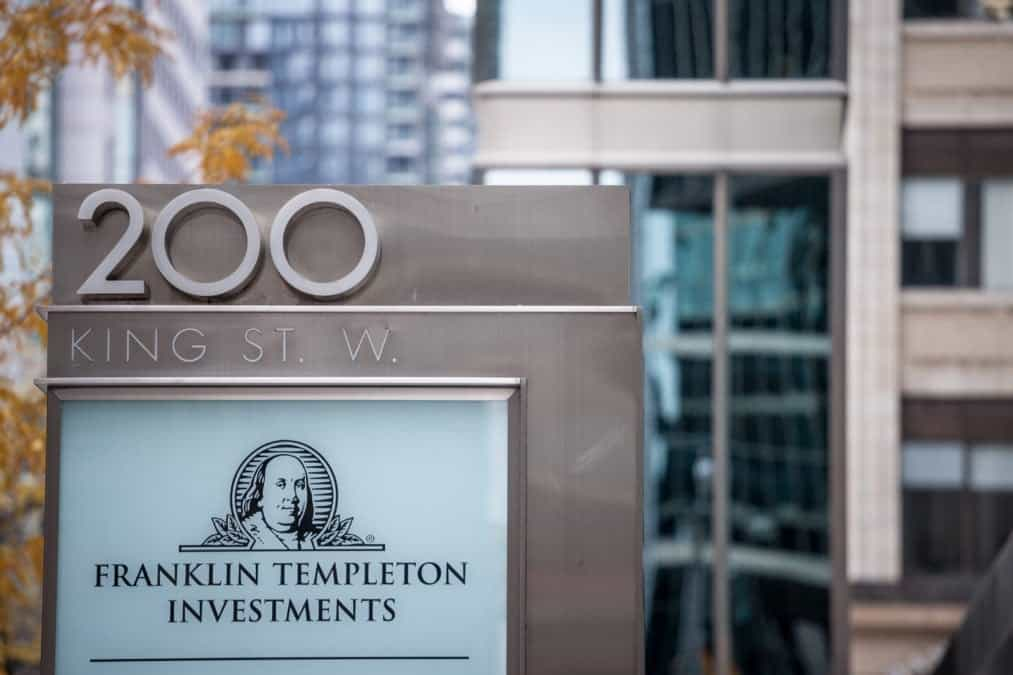New cash flow protocols: A rising tide lifts all the boats
1. Why cash flow tokenomics are net positive for the space?
When the first article about cashflow protocols was written, there were only about 20 projects distributing sound money to holders/stakers. That number has grown considerably last 4 months as new projects try to ride the #realyield wave that has bring good results so far to GMX, GNS, UMAMI and other projects with some of the best performance in 2022.
This is a good trend in general terms, as users are properly compensated for the risk they are assuming holding or locking tokens for a certain period of time. Last 2 years, have shown that just voting rights, are not enough financial incentive in the majority of protocols.
Main criticism to this model is “early stage startups should reinvest ALL the profits into the project to achieve a bigger growth”
Well, I don’t think this is necessarily true. In fact I believe this argument to be a fallacy most of the times.
It is usually presented as a manichaean debate. 100% yield to holders or not a single penny. Situations are never white or black, but an array of greys. If you have a profitable business you can usually do both. And that is what projects should strive for.
As such I fully agree on the fact that projects need to have strong treasuries to avoid crippling growth and securing a confortable runaway for the project but that is not inconsistent with distributing a part of the profits among holders.
Let’s showcase it with an example. GMX, there are other good examples though.
-
GMX has generated in 12 months about 100M$
-
70M$ have been distributed to LPs and 30M$ to $GMX stakers
-
GMX expenses are 1M$ yearly aprox
So in short, if holders were not getting a single penny, the protocol would be having a surplus of 29M$ yearly.
Even if GMX expenses grow x10 to 10M$ yearly (not very likely considering how scalable the model is) you would still have 66% of the company profits (20M$) left.
Enough money to invest in the growth of the protocol and compensate investors for the risk they are taking. If we want to move the conversation from “numba go up” to how businesses are performing on a long time basis, this certainly helps.
2. New cash flow protocols
This article will cover seven of the most interesting protocols I have seen recently deployed with #realyield tokenomics. There are many more, and I will probably write about them in the future. All the protocols featured in this article are based on Arbitrum.
This is not financial advice and only intends to be an overview of the current state of the art regarding projects distributing sound money to holders. The fact that these projects are included here does not mean I think they are good investments at this moment.
Projects are sorted by their FDV, Rage Trade STFX have not yet launched a token in the open market so their last round values have been assigned.

-
Rage Trade - $RAGE
It is a perpetual trading protocol that builds on external liquidity (recycles) to achieve a higher capital efficiency. It attracts liquidity through a set of farms operating on proprietary strategies that provide certain features like delta neutrality.
Right now they are mostly focused in liquidity attraction through vaults (like UMAMI) but they intend to be a serious contender in the dex perp trading business.
Rage has around 15M$ in TVL mainly due to GLP and trycrypto vaults. They have caps in place to control growth, so this number might scale in the near future.
Not a lot of information about their future token apart from the fact that will distribute a part of the profits among token holders.
They will likely airdrop some tokens to first users, so if you want to try it out you have some additional incentives to do it!
https://twitter.com/rage_trade
-
STFX - $STFX
They define themselves as a “DeFi marketplace for investable trades”.
In short that means they have created a platform where traders can deposit money to copy-trade their favorite traders or follow the strategies they like.
It’s an innovative project and one of the SocialFi first movers so I could see it gaining solid traction in the future even though their organic metrics are not that impressive at the moment (vaults are capped at 1000$)
Managers of the vaults will earn 15% of the profits and protocol will keep 5% of the vault profits. Out of that 5% of protocol profits, 80% of them will be redirected to token holders and 20% to the STFX DAO.
Their public sale is being done at this time, so make sure to check them out if you are interested!
https://twitter.com/STFX_IO
-
Buffer Finance - $BFR
Binary trading protocol focused on short timeframes. It allows for betting on up or down in several timeframes (5 min, 15 min, 1h, 4h or 24h).
Innovative product that addresses an important addressable market, those that want to bet on the market without all the complexity (funding fees, liquidations, pricing mechanisms for premiums etc)
Liquidity still capped to 500k$ so trade size is limited but I believe it has good product market fit and could do great if they achieve to scale with proper risk management.
Their tokenomics emulate those of GMX (real yield to stakers, escrowed tokens etc) so they are quite solid on that front. Worse part is almost 80% of the supply is still not in circulation.
There is an upcoming NFT collection with utility being minted soon, check their twitter if you want to know the details!
https://twitter.com/Buffer_Finance
-
Tender Fi - $TND
Lending protocol with a strong focus on long tail assets.
It will be the first project allowing lending/borrowing using GLP GMX as collateral among many other long tail assets through an in-house novel design.
Even though the lending segment is pretty crowded their focus on alternative markets could boost their adoption and give them an edge over competitors.
Tokenomics are very similar to GMX, so $TND stakers will accrue fees from liquidations, in exchange those stakers secure depositors against losses.
The team intends to airdrop a token to GBC holders, so stay put if you are a GBC holder!
https://twitter.com/tender_fi
-
Camelot - $GRAIL
New generation AMM that allows both the trading of volatile assets and stable swaps in highly customizable pools (p.e. assigning different fees depending on the direction of the trade)
Additionally they have a few innovative features about liquidity provision and heavily incentivized farms so they provide one of the venues to park your funds if you are looking for good returns on your funds (p.e. 103% APR in GMX-USDC atm)
The protocol currently secures 17 M$ in TVL and while being relatively small compared with Uniswap they could gain traction if they attract some long tail Arbitrum assets.
They have implemented a dual token system (GRAIL/xGRAIL) to reduce the sell pressure and guarantee stakers are the ones receiving the benefits (real yield, boost in yields, launchpad allocation etc)
22,5% of the protocol profits are distributed to xGRAIL stakers while 12,5% is used to buy-back GRAIL in the open market and burn it.
https://twitter.com/CamelotDEX
-
GMD - $GMD
GMD is a yield aggregator that builds on top providing liquidity for other trading platforms like GMX or Buffer Finance.
They usually provide extra features for LPs compared to using the base protocol (p.e. single staking or delta neutral vaults for GMX) and charge a fee for being the middleman.
Their future plans also involve aggregating and simplifying trading strategies (long, short, copy-trading etc)
Even though their addressable market is probably not as big as the layer protocols, I believe they will be able to tackle a profitable segment of users that want exposure without the complexity that derives from it, specially if they manage to provide extra features to the base layer protocols (GMX, BFR etc)
GMX style tokenomics, staking $GMD currently provides a 20% APR.
Their size is still rather small at 5M$ TVL due to vaults being capped but their products show a lot of market fit so I expect them to grow rather fast in the following months. They have just released their BFR vault, check it up!
https://twitter.com/GMDprotocol
-
Party Dice - $DICE
Aims to be a decentralized crypto casino, simple and easy to use.
It was born as a test project that got decent traction so the team is currently working in a more professional product and migrating to a version 2.
Product market fit is yet to be seen as final product has not been released but they are tackling a massive industry and team seems capable and willing to ship.
Final tokenomics for v2 are still being drafted but $DICE holders will likely receive 30% of the protocol profits.
https://twitter.com/riskydotlol
3. Main takeaways
-
Cashflow projects success has pushed new projects to launch with a similar framework
-
This movement is net positive for the crypto ecosystem, as part of the value created by the business is redirected to those financially supporting it
-
Being a cashflow protocol does not make it a good investment, but it definitely helps to accrue value. Research show these projects command a premium

Disclaimer: The content of this article solely reflects the author's opinion and does not represent the platform in any capacity. This article is not intended to serve as a reference for making investment decisions.
You may also like
VIPBitget VIP Weekly Research Insights
Recently, BTC has weakened, altcoins have declined across the board, and trading volume on the Solana blockchain has continued to shrink. Daily transaction volume on Solana has hit new yearly lows, with over $200 million in sell-offs on pump.fun in just over two months since the start of the year. Additionally, the hype surrounding Argentina's president-related memecoin last weekend drained additional liquidity from the Solana network. Adding to investor concerns, a large amount of SOL is set to be unlocked on March 1, exacerbating deteriorating sentiment and leading to a noticeable decline in market wealth effects. Against this backdrop, investors are advised to reduce leverage, manage risk, and reserve funds for potential dip-buying opportunities. This edition highlights several USDT-based, SOL-based, and BTC-based Earn products, offering investors a diverse range of investment options.

Bitcoin News: $1.25B Stablecoin Injection—Fuel for the Next BTC Pump?

Franklin Templeton seeks SEC approval for a Solana ETF involving staking
Quick Take Franklin Templeton’s registration statement posted on Friday included language around language on staking for a proposed Franklin Solana ETF. “I think staking will ultimately be allowed for all proof-of-stake assets inside an ETF wrapper,” said Bloomberg ETF analyst James Seyffart.

Bitcoin Holds at $95K, but Market Lacks Catalysts for a Breakout

